Review: Studio Electronics Midimini V30
As Studio Electronics celebrates the 30th anniversary of its monster monosynth with a new reissue, we see how the V30 racks up against its predecessor, as well as Moog’s Minimoog and Voyager.
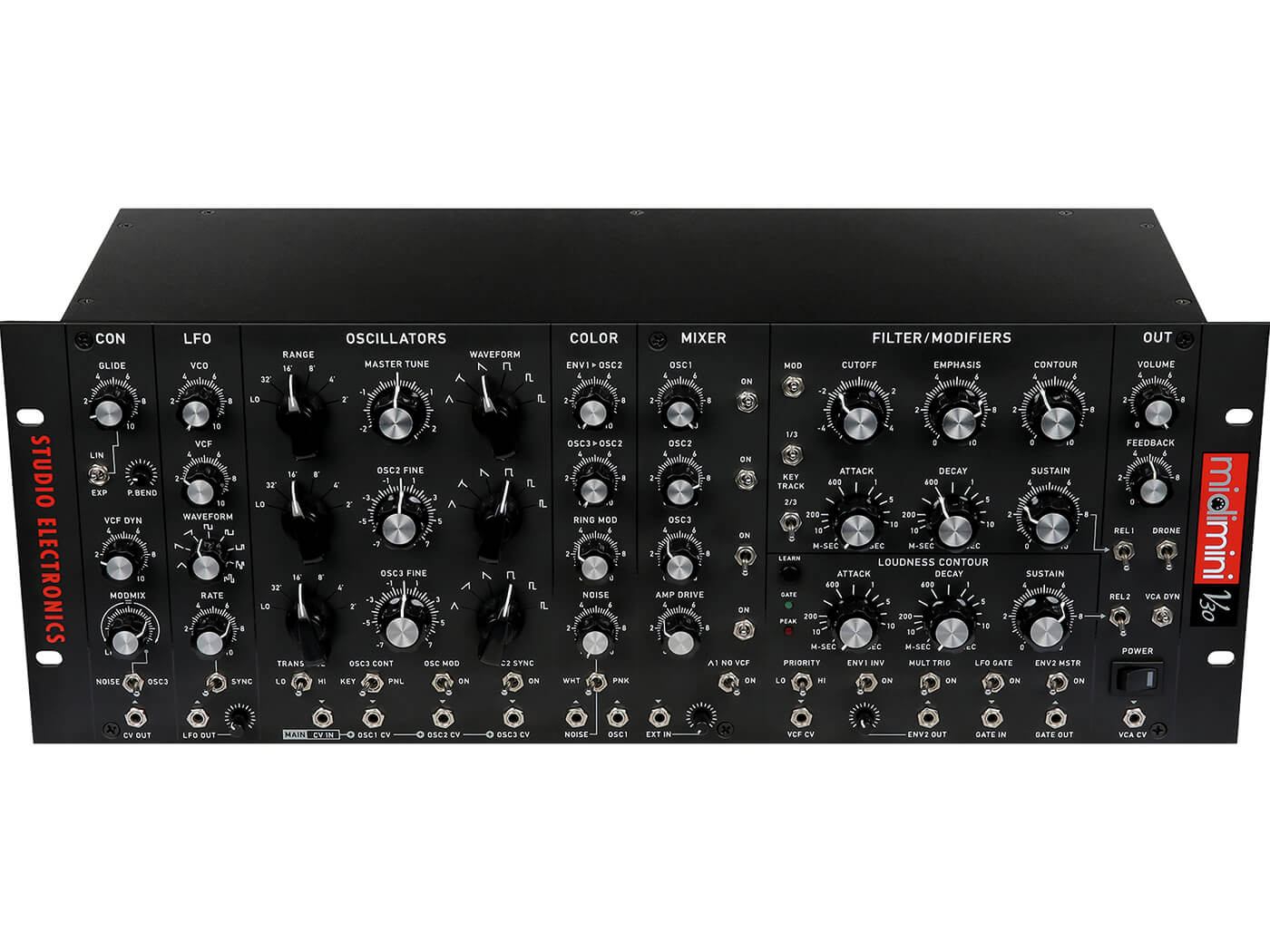

Price £2,899
Contact Studio Electronics
It’s been 30 years since the release of the Midimini and Los Angeles makers Studio Electronics has decided it’s high time to revisit the monosynth with which it made its name. Like the original, the V30 is a 4u rackmounted unit. There’s a built-in power supply, MIDI-in and MIDI-thru ports, and a single 1/4-inch jack output. Its bulky metal casing is unsurprisingly heavy; the nature of the beast is analogue, after all. Produced, calibrated and tuned by hand in the US, the V30 has been reared with so much tender loving care that you’ll almost feel like you’re adopting it rather than weighing it up as a potential purchase.
It may be difficult to imagine given today’s market but there was a time in the mid-1980s that the price of analogue synthesisers was so low that their makers were almost giving them away. Their fall from grace came about largely due to a change in musical production styles, coupled with the onslaught of the digital age (we’re looking at you, MIDI) that saw digital alternatives to analogue synths become increasingly affordable. It helped that these alternatives offered sounds that were clean, fresh and terrifically exciting for their time.
Unfortunately for us, the tanking prices of analogue equipment didn’t last. By the late-1980s, the hunger for analogue technology had reared up again, as reverence escalated for Moog designs that were by now considered stone-cold classics. At this point, Studio Electronics wisely picked up the mantle, producing the Midimoog and Midimini, both of which offered Moog-quality sound in a modern studio-friendly and MIDI-compliant format. Back then, these were genuine wonders.
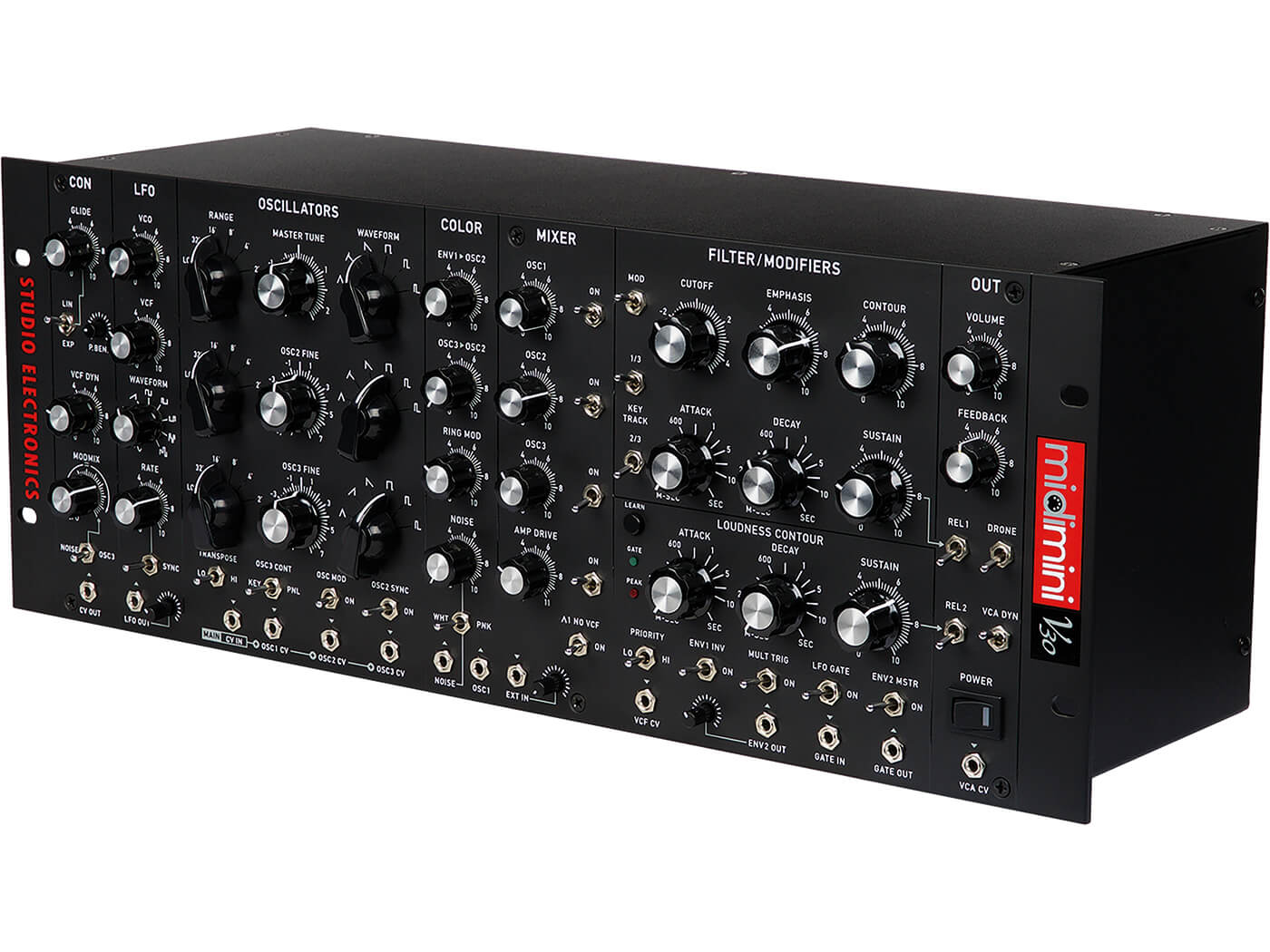
Don’t touch that red button
At just under £3,000, adopting the V30 might be a daunting prospect but, once you’ve removed it from its carton, held it close and turned a few pots, you’ll soon understand where your money went. Built like a tank, with through-hole component construction throughout and metal-shafted pots at every turn, the V30 radiates quality – and then you turn it on…
Unlike many contemporary synths that are lit up like an LAX runway, the only telltale sign that this behemoth is actually powered is its glowing red power button. But when you play a note, its power proper quickly becomes apparent. At this point, we could cite the story of the first time Gary Numan heard a Minimoog and how it changed his life – but we’re now 40 years further on from that seismic event and a lot has changed. What hasn’t changed, however, is the sheer sonic impact of a sturdy analogue synth.

The great test
Dutifully faithful to its predecessor, the V30 offers a calmingly familiar signal flow, with three VCOs that provide six waveforms: triangle, sawtooth and square in three pulse widths, plus the ‘sharktooth’. But how close do these timbral elements compare to the original Moog’s? There’s only one way to find out: take our V30 review model into the studio and stack it up against a re-issued Minimoog and a Moog Voyager.
There are subtle differences in sound between the V30 and the Minimoog, with the former seeming tighter, with greater depth. According to Studio Electronics, the VCO, VCF and envelope designs are identical to the original design. Having said that, the California company has tinkered with the feedback element, hard-wiring the old Minimoog trick and in essence looping the headphone output back into the external input in the mixer, creating a feedback loop.
This element can be controlled via a fixed pot, as can white and pink noise, amp overdrive and ring modulation. Increasing any of these is simple thanks to the dedicated pots and their clear legends. Sculpting sounds of serious magnitude comes quickly and easily.
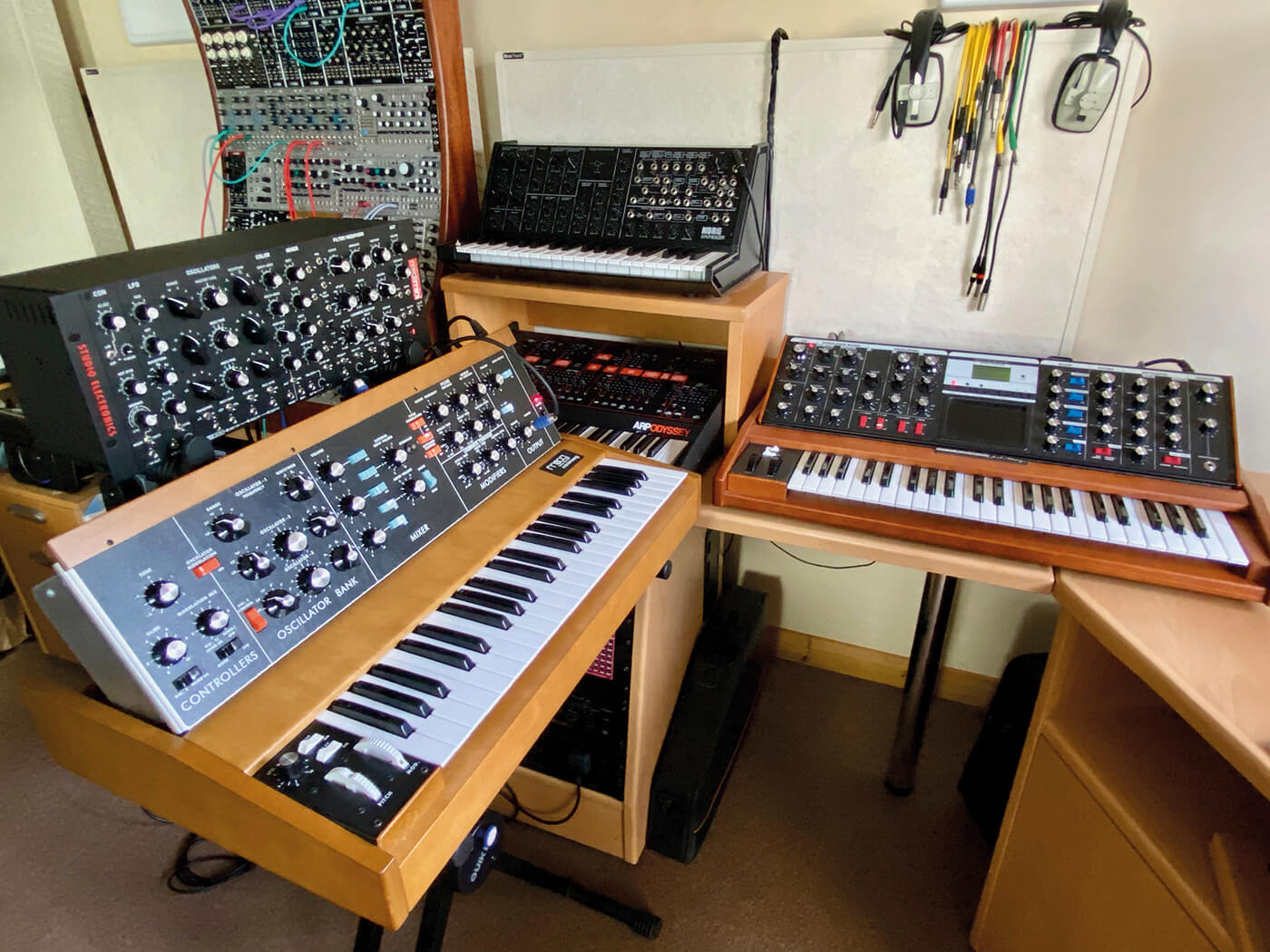
In auditioning the V30, we go back to basics, with a single VCO set to sawtooth. Even in this most rudimentary of settings, it sounds crisp and clean. It feels secure, detailed and almost unbelievably weighty. It feels closer in tonal performance to the Moog Voyager – though it lacks none of the clout that made the original Midimini so beloved – but there’s a weight to the lower frequencies and harmonic content that makes the V30 more akin to its predecessor.
With two three-stage envelopes to play with, the V30’s filter envelope modulation is handled independent of VCA control, just like the original Midimini. Both envelopes offer the ability to switch the decay to release mode too. The envelopes’ behaviour replicates that of the original Mini’s envelopes exactly. When playing repeatedly, on a single note, the signal increases in presence with each re-attack.
As our exploration continues, we have to check that we’re still listening to a //single// VCO, such is the enormity of the timbral experience. Add another VCO and the weight and depth increases exponentially – and this is before we’ve tackled the cross-modulation possibilities, found in the Color section.
The first element offers pitch modulation of VCO2, which when used alongside the oscillator-sync control results in the recognisable OscSync that’s synonymous with the Midimini. Further cross modulation of VCO2 from VCO3 can recreate the kind of fantastic analogue science-fiction-style overtones typical of the 1980s.
Good ring modulators aren’t easy to find. But if there’s one company that has always understood the benefits and possibilities offered by ring and cross modulation, it’s Studio Electronics. The V30’s ring modulation can be applied via a dedicated pot or via the Color section. When applied subtly, it adds beautiful, rounded harmonic overtones. Add it more liberally and it will reward you with gnarly saturation, best likened to a Midimini on steroids.
Moreover, exploiting the ring modulation alongside the amp overdrive or feedback options will see things get brilliantly messy brilliantly quickly. It’ll feel like the V30 is just about ready to rip your head off but what’s more impressive still is the ease and control with which you can get this monosynth to reach that level of ferocity.
The Midimini was always associated with sheer power. The V30 is no mere facsimile – though, even if it was, it’d be impressive – but more a machine that builds upon the basics of its predecessor with additional colours and harmonic interest. There’s more to the V30 than masses of volume and frequencies, however.
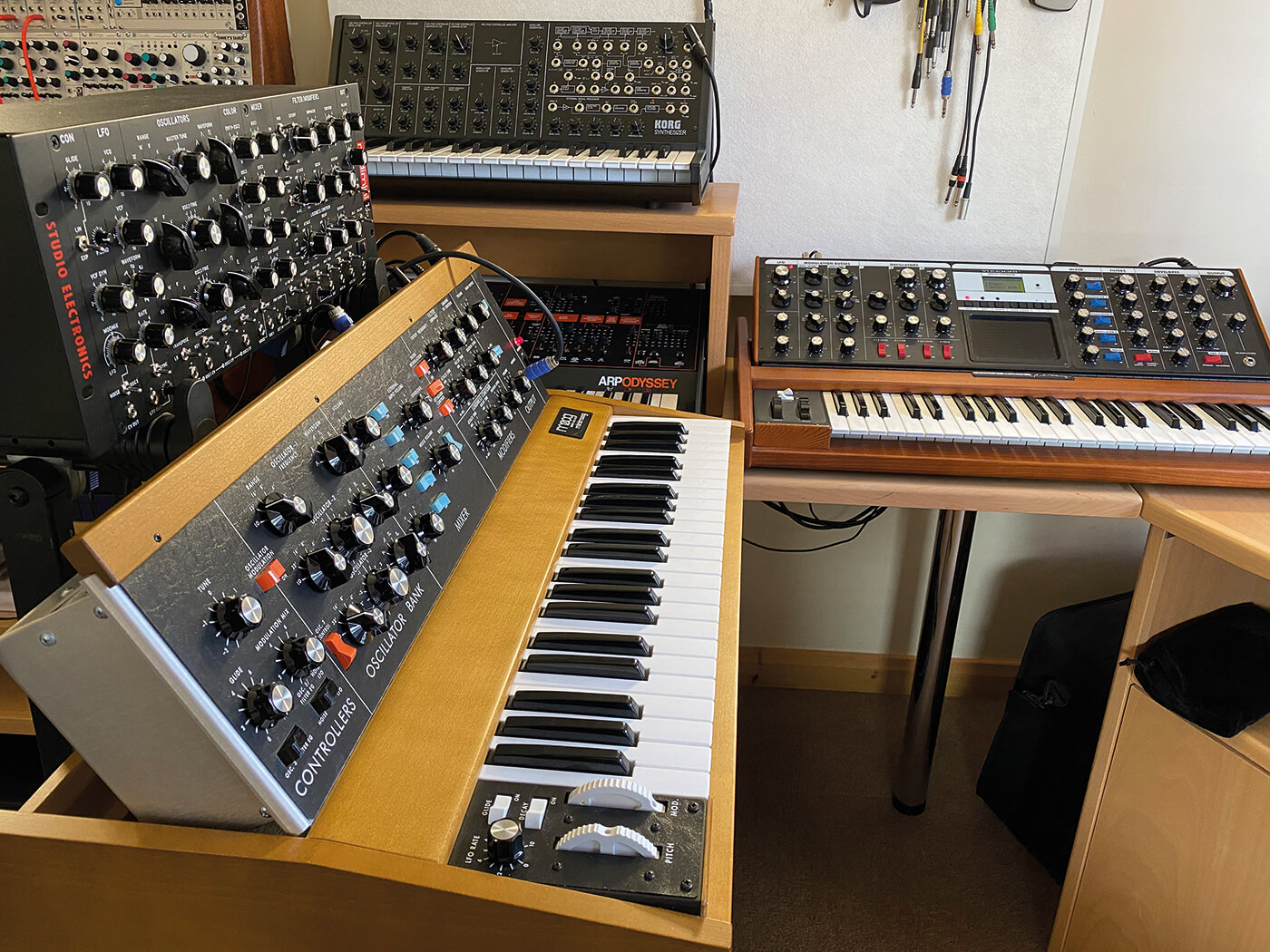
Subtractive additions
The 30th-anniversary release boasts a significant number of enhancements that see it step above and beyond both the original Midimini and the Minimoog, beginning with its dedicated LFO. While the main VCOs can also be switched to a low-frequency mode, the presence of this dedicated LFO is most welcome, as it allows the main VCOs to maintain their tonal presence.
This issue was addressed on the Minimoog Model D reissue too, released in 2016, as well as the Moog Voyager before it. But the V30’s LFO section turns things up a few notches with its full suite of waveforms. These include sine, triangle, ramps, pulses and randomised waves, all of which can be routed to either VCO pitch or VCF cut off. The rate-control pot allows for total freewheeling too.
This means that any pitch-based modulation can be deployed as basic undulating vibrato, which gets grisly in the upper frequency range. As with other areas of the V30 though, control remains close at hand thanks to the sync switch, which locks the LFO nicely to an incoming MIDI clock. In this instance, the rate pot then reverts to a clock-divide function.
A minor quibble here is that the wave-selection pot in the LFO section doesn’t click into position, which means users have to line the pot up freely with their desired waveform, which makes it more difficult to be accurate. A click-to-position pot would’ve made this easier.
To the left of the LFO section is the Control section, which features pitch-bend and glide controls, the latter presented in both linear and exponential formats. The Moog glide (also known as portamento) has always offered a distinctive characteristic, and those facets have been exactingly reproduced here too. As the glide nears its note-based summit, it slows to a crawl, just like the original. But it’s another feature within the V30’s Control section that we must crown as its most exciting.
The V30 has the ability to control either the amplifier or the filter via velocity, and in the latter case can be applied from a dedicated pot. Coupled with the exemplary behaviour of the filter-directed envelopes, this allows for some extraordinarily elegant playing, which is musical and controlled even with the most lacklustre MIDI keyboard.
On the face of it, this is such a simple function but the behaviour of the original envelope shapes during the decay/release phase evokes the most euphonious level of control. Studio Electronics has engineered this in such a subtle way that you could get lost in monosynth-solo territory for a long time with just a single VCO for company. It’s this that makes us yearn for a Midimini in a more traditional keyboard format. The synth has so much to offer any half-decent keyboard player that many would relish the notion of a Minimoog-style format.
The MIDI-learn feature allows the modulation wheel or aftertouch to be quickly and efficiently routed to the filter cutoff, while a three-way switch allows users to swiftly set all VCOs either an octave higher or lower than the default.
The inclusion of MIDI is clear from the V30’s name but there’s a fair smattering of CV mini-jack points too, from the more basic pitch control of each VCO to CV control of feedback attenuation. There is also a gate input, should you wish to hook up to Eurorack and control the V30 with more old-school technology, although the timing of the MIDI triggering is as quick and assured as anything generated from a gate trigger.
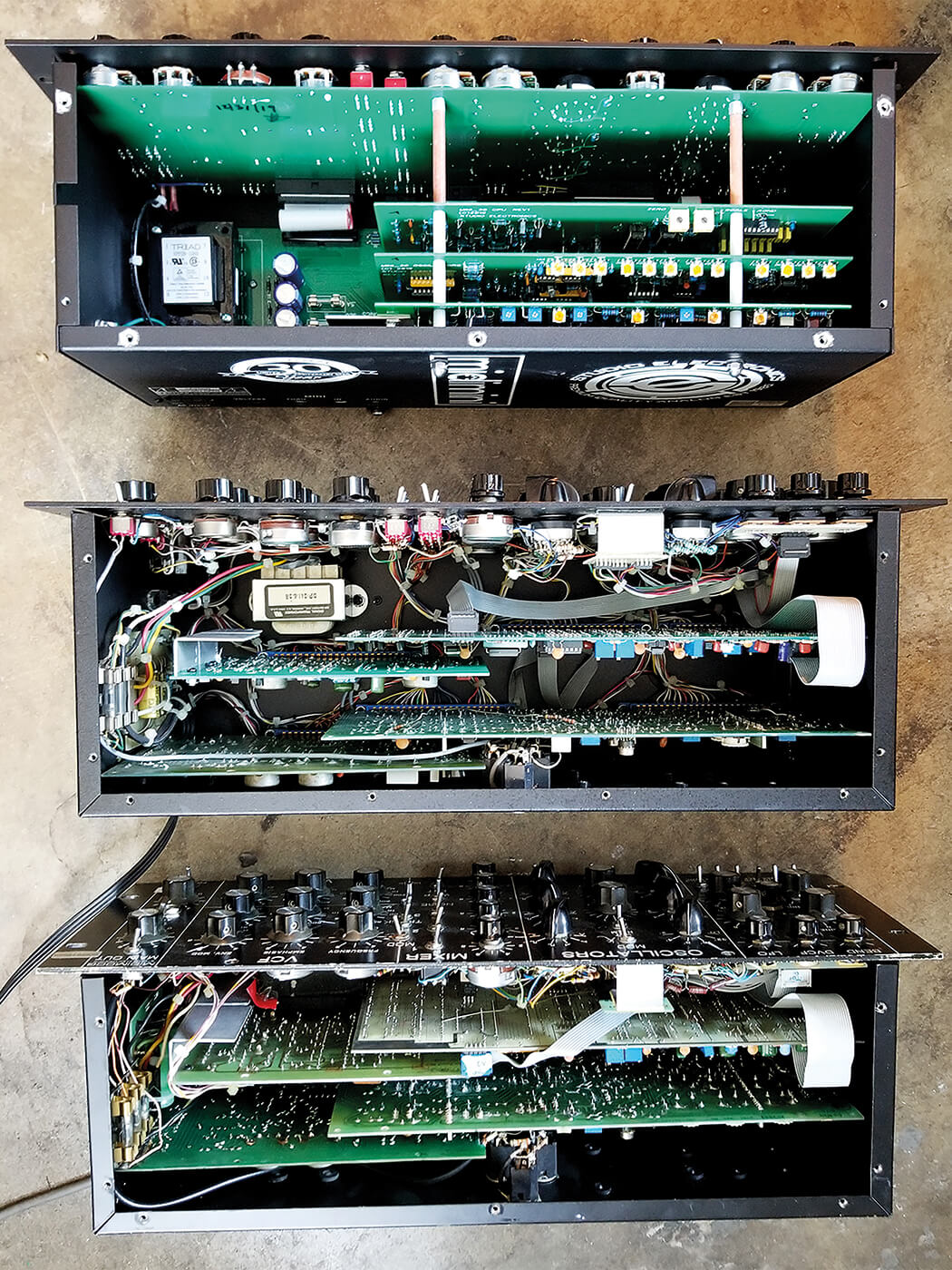
Big bucks synth
When it comes to synthesiser design, if you can nail the basics, there’s every chance that your instrument will be a winner. Studio Electronics have done just that. You can surrender yourself to the V30 safe in the knowledge that its content-packed VCO and Color sections nod to the past while remaining suitably equipped to tackle future productions. If you build up some harmonic-rich content, the 24dB ladder filter is able to tame any unruly frequencies, while the overdrive and distortion can help maintain lower-frequency content thanks to the resonance control, described here as Emphasis.
It’s rackmount format and sky-high price makes the V30 easy to overlook. But while Moog still offers plenty of possibilities in its monosynth lineup, it has nothing that can match the classic Midimini setup: three oscillators, noise and feedback heading into a ladder filter. Moog’s Matriarch gets close, sure, but its filter type isn’t quite the same and doesn’t offer the convenience of the original Midimini or the Voyager.
After using the Midimini V30, the Minimoog and the Voyager side by side, it becomes clear where Studio Electronics’ reissue resides within this monosynth hierarchy. The Californian company has taken the whopping sound of the Midimini, tightened up the backend output and added a raft of features that turn this box into a classic musical instrument. It’s not all about the spec but the output and the musicality, assets that should chime with owners of the original Midimini. It is a shame that some of the Voyager-esque resources, such as the ability to control or modulate VCO pulse width, have been omitted.
The V30 may have fared better with Voyager-style four-stage envelopes too but its three-stage envelopes are nevertheless very characterful. The V30 features no facility to recall patches either. Many analogue die-hards will see this as a positive, however, as it forces users to learn how to play and use the monosynth – a neglected skill in the age of the soft-synth – rather than rely on shortcuts.
The V30 is a hulking metal box with a burly price tag to match but don’t let that put you off. This isn’t just another synth. It’s a beautifully built labour of love courtesy of a company that knows as much about its field as any other. This monosynth sounds stunning and, if you’re lucky enough to spend time with one, you’ll understand why its predecessor was so desirable 30 years ago, and why its anniversary edition is so costly today. With this type of build quality, these kinds of components and this level of care and attention to detail, the V30 should provide a lifetime of music making – and what better investment than that?
Do I really need this?
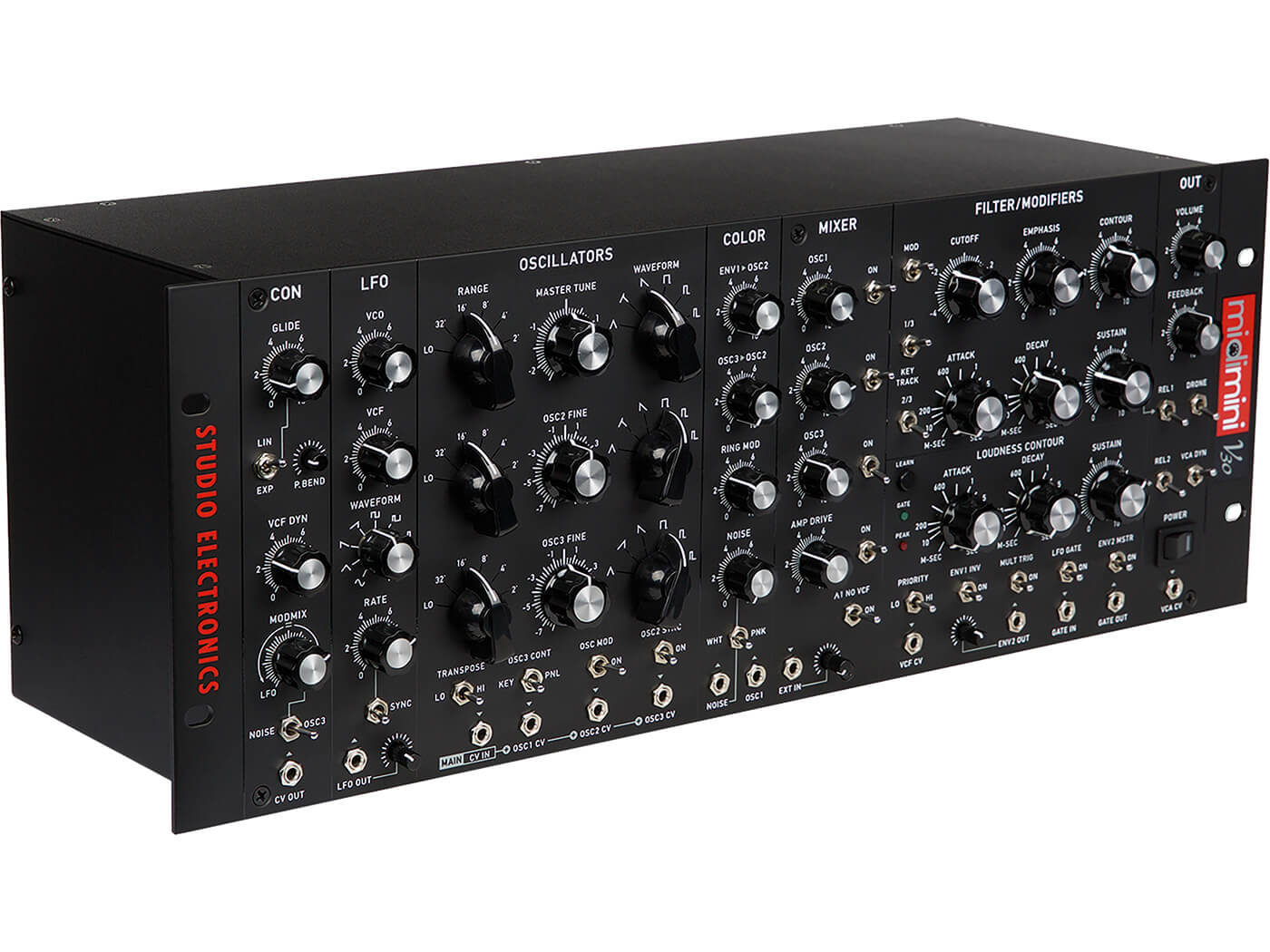
There’s an enormous glut of synthesisers to choose from right now at all ends of the market. Given that the Midimini V30 sounds phenomenal and will find bedfellows in many production styles, the question comes down to expense. This monosynth will be beyond the budget of many players. It costs about as much as 10 cheaper synths but is it worth that? We think so. It’s hand-built with high-grade components and will almost certainly outlive cheaper, lesser-quality synths by many years.
It offers a mixture of the outright classic tones and features alongside plenty of new and exciting ones, such as cross and ring modulation. The V30 has longevity on its side. Having placed it alongside many other synths, including some in similar price brackets, we can confirm that the V30 is a cut above many of its contemporaries. Given that you could comfortably use this thing for another 30 years or more, even at its full RRP, you might think of it as something of a bargain. It will eventually pay for itself in joy – and you can’t put a price on that.
Key features
- 4u rackmount monosynth based on the Minimoog
- Classic reincarnation of the original Midimini
- Improves on the original with new features
- Faithful recreation of VCOs, ladder filter and envelopes
- MIDI and CV/Gate input
- MIDI-learn facility for assignment of mod wheel and aftertouch control
- Through-hole build on every internal board
- Hand-made and calibrated in the US
Alternatives
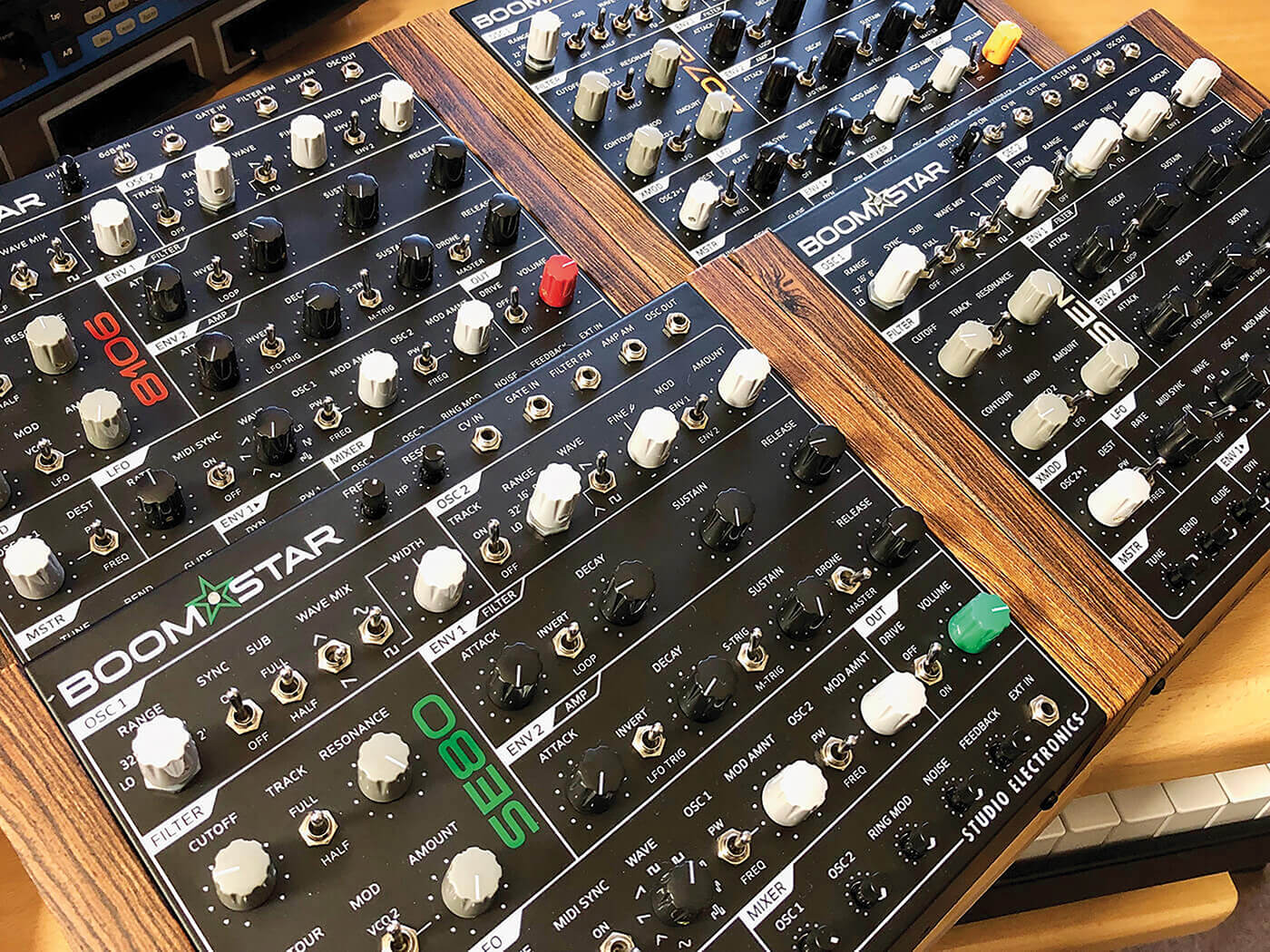
Studio Electronics
Boomstar MKII £999
The Midimini V30’s little brother, the Boomstar is available in several filter flavours, from Oberheim SEM to Roland-style 8106, all of which have high-quality production values and staggering power.
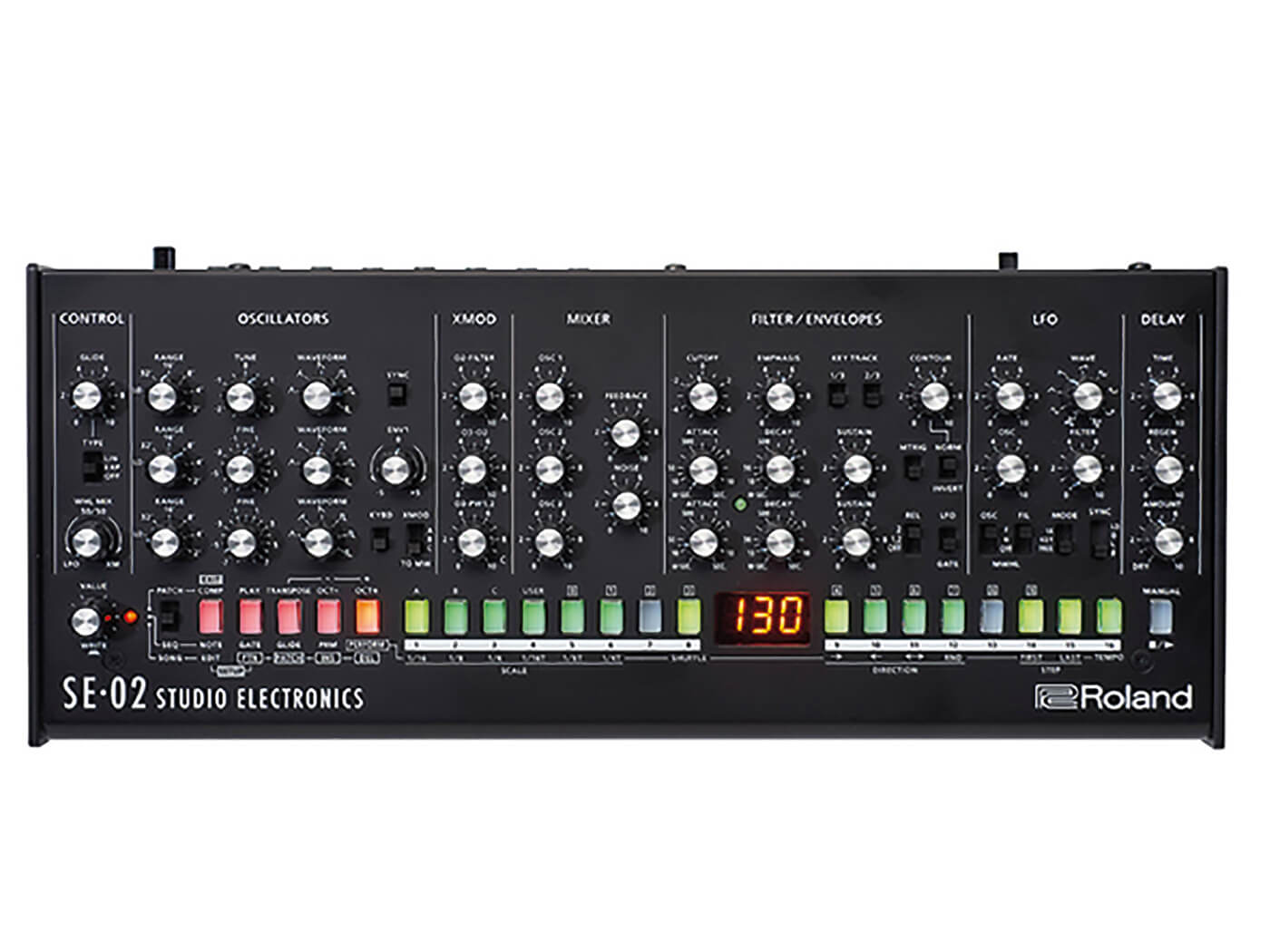
This boutique-based unit is the result of a collaboration between Studio Electronics and Roland. The resulting monosynth has credentials similar to the Midimini. It’s bijou form makes for a diminutive panel size but its sonic attributes are much bigger.